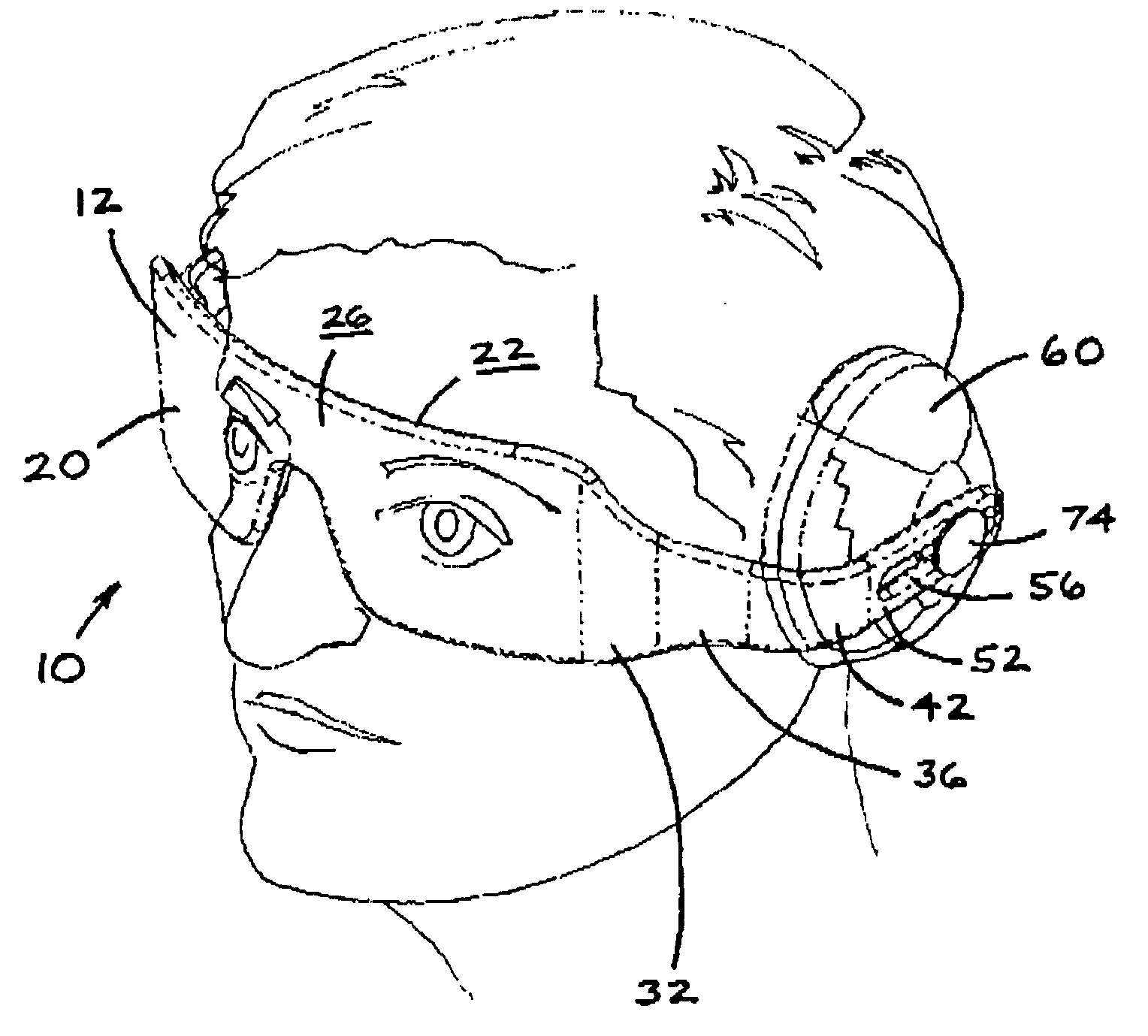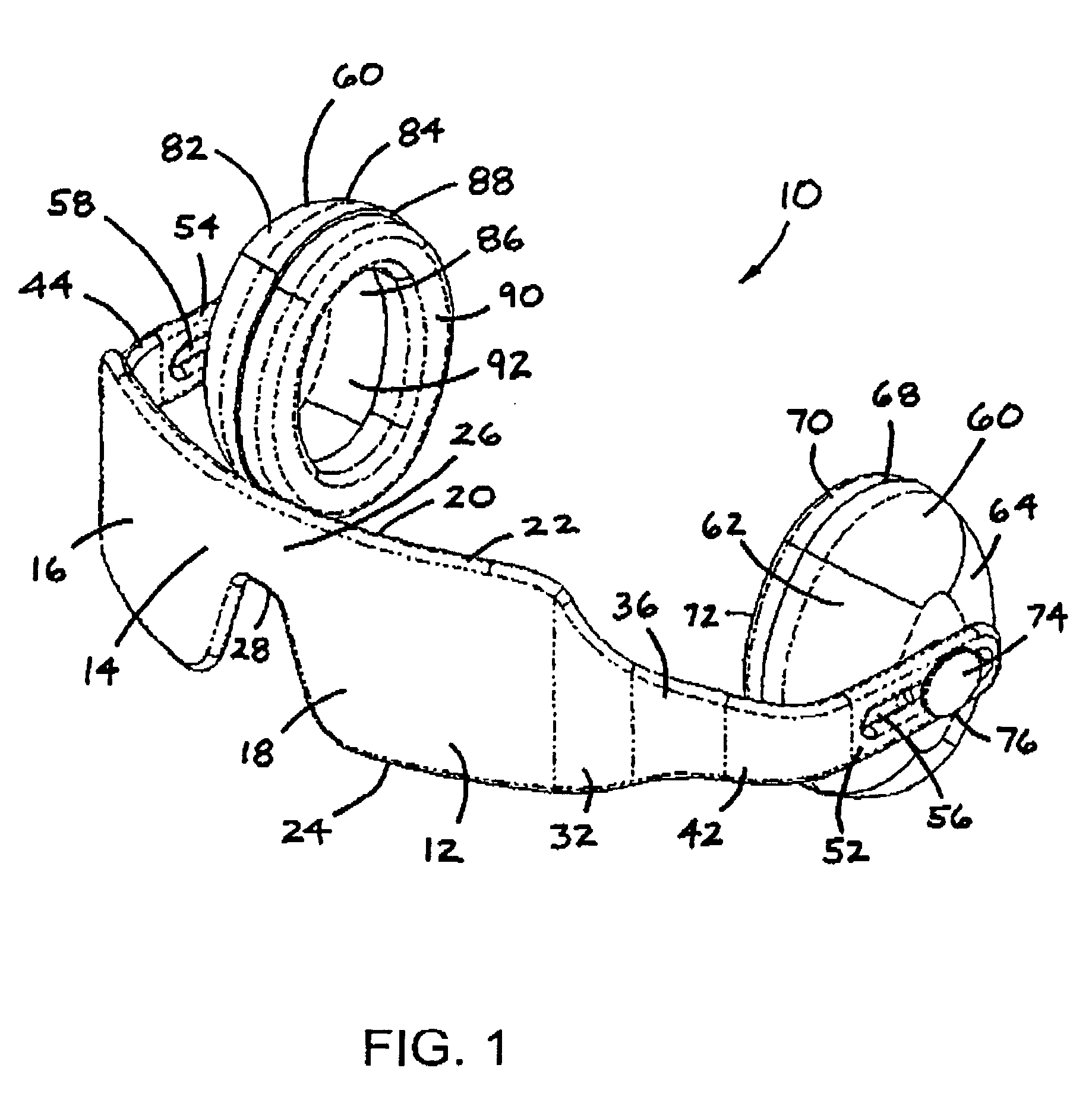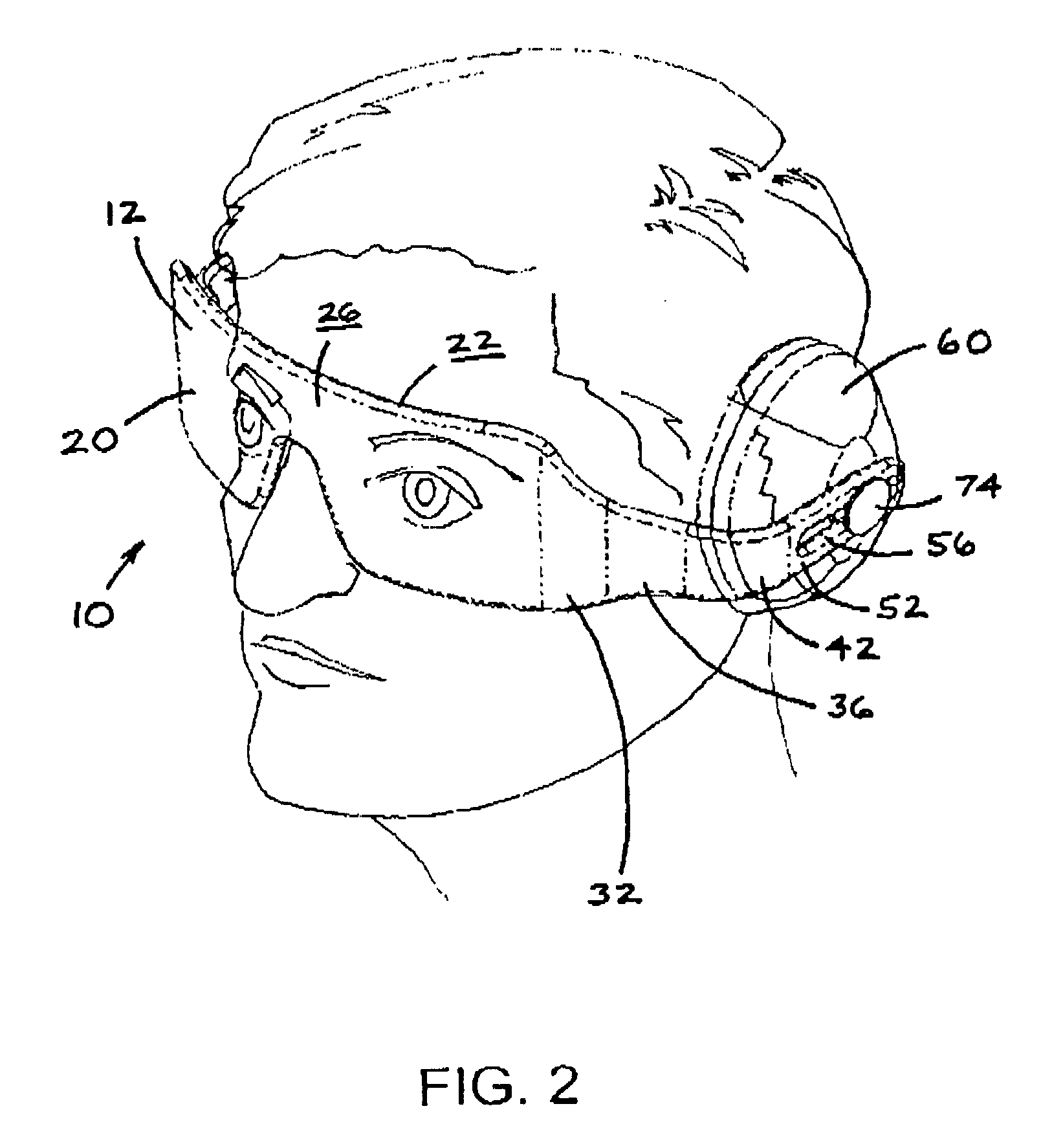Eye and ear protection apparatus
a technology for ear protection and eye protection, which is applied in the direction of headwear caps, goggles, hats, etc., can solve the problems of affecting the use of conventional eyeglasses, the tendency of pinching the skull grip of conventional glasses, and the discomfort of wearing separate eye protection devices with separate ear protection devices, so as to reduce or eliminate the discontinuity between lenses and frames, improve the conventional eyeglass configuration, and reduce the effect of impairmen
- Summary
- Abstract
- Description
- Claims
- Application Information
AI Technical Summary
Benefits of technology
Problems solved by technology
Method used
Image
Examples
Embodiment Construction
[0013] Referring now to the drawings in detail wherein like numbers represent like elements throughout, FIG. 1 illustrates a perspective view of one embodiment of the eye and ear protective device, generally identified 10, constructed in accordance with the present invention. As shown, the protective device 10 includes the essential elements of an eye protection portion 20 and an ear protection portion 60.
[0014] As shown in FIG. 1, the eye protection portion 20 of the protective device 10 comprises a continuous, substantially planar and symmetrical eye protection member 12. The eye protection member 12 has a frontal portion 14 that is functionally adapted to cover the frontal portion of a user's visual field. See also FIG. 2. This frontal portion 14 includes a pair of optically clear or visually transparent and symmetrical lens portions 16, 18. The lens portions 16, 18 are integrally connected to one another by means of a nose bridge portion 26. The frontal portion is further defin...
PUM
 Login to View More
Login to View More Abstract
Description
Claims
Application Information
 Login to View More
Login to View More - R&D
- Intellectual Property
- Life Sciences
- Materials
- Tech Scout
- Unparalleled Data Quality
- Higher Quality Content
- 60% Fewer Hallucinations
Browse by: Latest US Patents, China's latest patents, Technical Efficacy Thesaurus, Application Domain, Technology Topic, Popular Technical Reports.
© 2025 PatSnap. All rights reserved.Legal|Privacy policy|Modern Slavery Act Transparency Statement|Sitemap|About US| Contact US: help@patsnap.com



